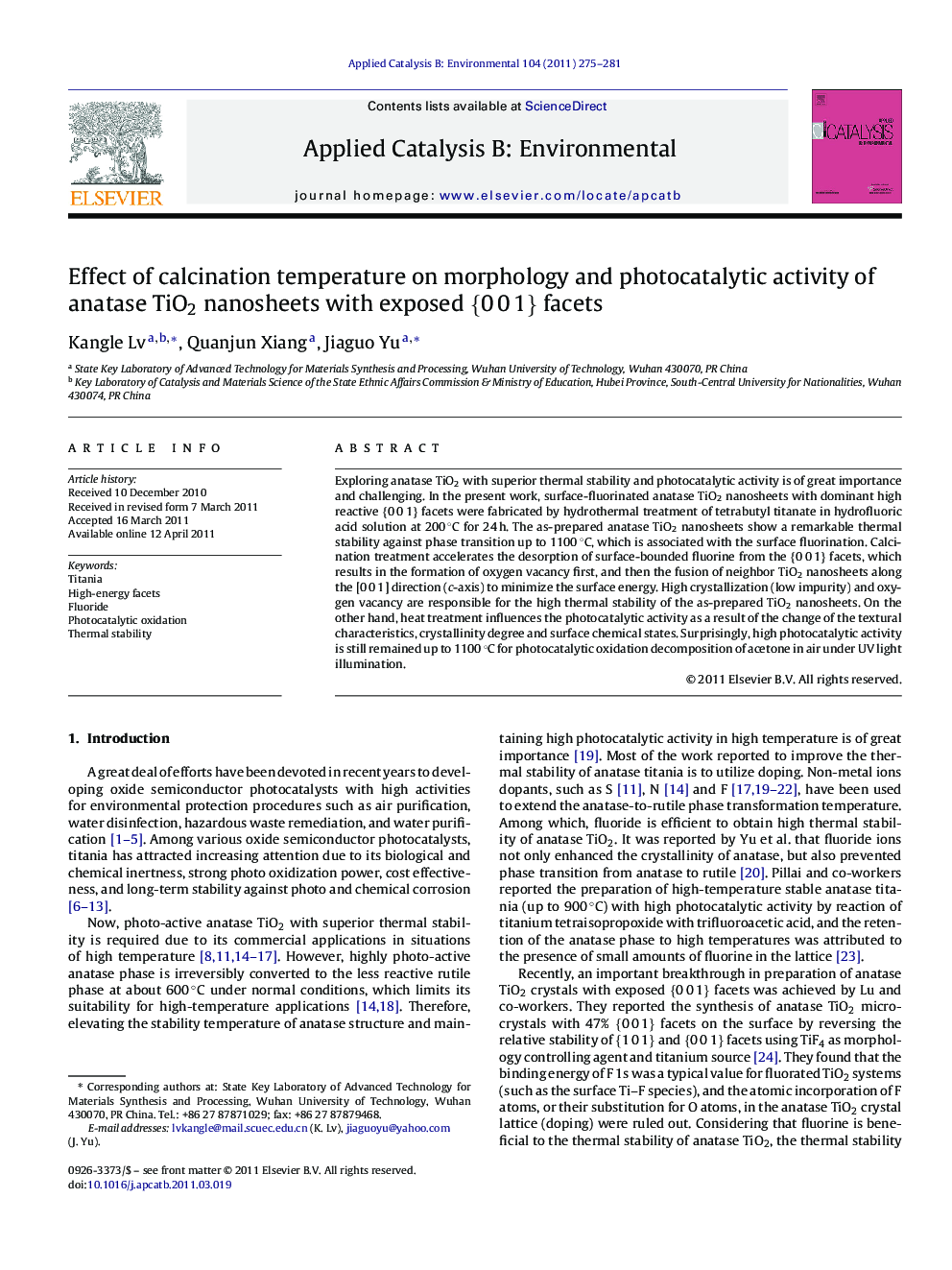| کد مقاله | کد نشریه | سال انتشار | مقاله انگلیسی | نسخه تمام متن |
|---|---|---|---|---|
| 46964 | 46454 | 2011 | 7 صفحه PDF | دانلود رایگان |

Exploring anatase TiO2 with superior thermal stability and photocatalytic activity is of great importance and challenging. In the present work, surface-fluorinated anatase TiO2 nanosheets with dominant high reactive {0 0 1} facets were fabricated by hydrothermal treatment of tetrabutyl titanate in hydrofluoric acid solution at 200 °C for 24 h. The as-prepared anatase TiO2 nanosheets show a remarkable thermal stability against phase transition up to 1100 °C, which is associated with the surface fluorination. Calcination treatment accelerates the desorption of surface-bounded fluorine from the {0 0 1} facets, which results in the formation of oxygen vacancy first, and then the fusion of neighbor TiO2 nanosheets along the [0 0 1] direction (c-axis) to minimize the surface energy. High crystallization (low impurity) and oxygen vacancy are responsible for the high thermal stability of the as-prepared TiO2 nanosheets. On the other hand, heat treatment influences the photocatalytic activity as a result of the change of the textural characteristics, crystallinity degree and surface chemical states. Surprisingly, high photocatalytic activity is still remained up to 1100 °C for photocatalytic oxidation decomposition of acetone in air under UV light illumination.
Anatase TiO2 nanosheets with exposed (0 0 1) facets, fabricated by hydrothermal reaction of tetrabutyl titanate and HF solution, show high thermal stability (up to 1100 °C) and photocatalytic activity for photocatalytic oxidation decomposition of acetone in air.Figure optionsDownload as PowerPoint slideHighlights
► High-energy anatase TiO2 nanosheets show a remarkable thermal stability against phase transition up to 1100 °C.
► Surface adsorbed fluoride ions play important role on the superior thermal stability.
► Heat treatment results in the growth of TiO2 nanosheets along the [0 0 1] direction (c-axis).
► High crystallization (low impurity) and oxygen vacancy are responsible for the high thermal stability of high-energy TiO2 nanosheets.
► The high photocatalytic activity is still remained up to 1100 °C.
Journal: Applied Catalysis B: Environmental - Volume 104, Issues 3–4, 18 May 2011, Pages 275–281